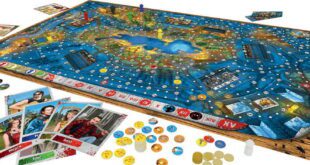In today’s tech world, “gamification” is more than just a catchy term—it’s a bridge connecting the digital environment to our everyday lives. It introduces game-like features such as points, badges, and leaderboards into our regular digital tasks, turning even the most mundane activities into engaging experiences.
This blend of the playful with the practical is not just enhancing user engagement but transforming the very nature of our digital interactions. In this article, we look at how gamification is blurring the lines between reality and play.
The Roots and Rise of Gamification
Long before digital screens invaded our pockets, gamification was as simple as a gold star sticker for good work in the classroom or a punch card that promised a free coffee after a certain number of purchases. It was all about instant gratification and a tangible reward. However, with the explosion of the internet, the concept took on a life of its own.
The virtual world came with badges, points, and leaderboards that were way more complex than a gold star but tapped into that same need for recognition and reward. As smartphones became an extension of our hands, these gamified elements were not just seen in games but spread to apps for learning, shopping, and socializing. It seemed the line between play and productivity was blurring.
Now, it’s hard to find an app or website that doesn’t have some form of gamification embedded in it. It’s no longer a nice-to-have feature but a must-have to keep users engaged and invested. The fusion of technology and gamification has been a give-and-take relationship that has driven both to new heights, crafting a digital world that is as entertaining as it is functional.
The Reciprocal Influence: Gaming and Technology

The relationship between gaming and technology is a story of progressive enhancements in graphics and processing speeds. With their innovative features and immersive experiences, landmark games have become conduits that channel technological innovation. They are more than entertainment sources; they are arenas where the mettle of emerging technologies is tested and honed, setting new benchmarks in user engagement and experience.
In the world of online casinos, this progression is undeniable. A prime example is the Book of Dead slot available online. This game ushers players into an Egyptian-themed universe, highlighting a harmonious blend of engaging narrative, visual appeal, and technological excellence. It underscores the significant strides forward that online casino gaming has made, epitomizing both the result and the driver of continuous technological advancements.
The evolution of technology and gaming isn’t one-sided; it’s characterized by a mutual influence where each sector fuels the other’s innovation. New gaming concepts continuously surface, each requiring technological enhancements to support their complex and engaging narratives.
Every technological advancement fosters an environment where more ambitious and immersive gaming experiences can be realized. It’s an ongoing dialogue of progress, where the wants of gamers and the innovations of developers continuously push each other to broader horizons, yielding experiences that meld technological refinement with artistic expression. And this is what we’ve seen as gamification has evolved and become part of our daily lives.
Real-World Applications of Gamification
Today, it’s hard to miss the influence of gamification in our daily lives. If you’re passionate about health, you know your fitness app isn’t just counting your steps; it’s cheering you on with badges and celebrating each milestone you hit. Education has transformed, too. When you take a class online, you aren’t just learning; you’re unlocking levels, and each A+ brings you closer to the next exciting chapter.
It’s like the entire world got a ‘fun’ upgrade. The routine isn’t just routine anymore – there’s a dash of play mixed in, making every task an exciting game where progress is measured in outcomes and in points, badges, and levels unlocked.
The Next Chapter in Gamification
It’s clear that gamification is about to take a giant leap forward, thanks to advancements in Virtual Reality (VR) and Augmented Reality (AR). These aren’t just buzzwords; they’re game-changers that will amplify the gaming experience and seep into our daily tasks.
Imagine a world where your work, play, and learning environments merge seamlessly, each one enhancing the other. It’s not science fiction but a future where every aspect of our digital and physical lives promises richer, more engaging experiences.
 khamush.com Lifestyle | Motivation | Poems
khamush.com Lifestyle | Motivation | Poems



